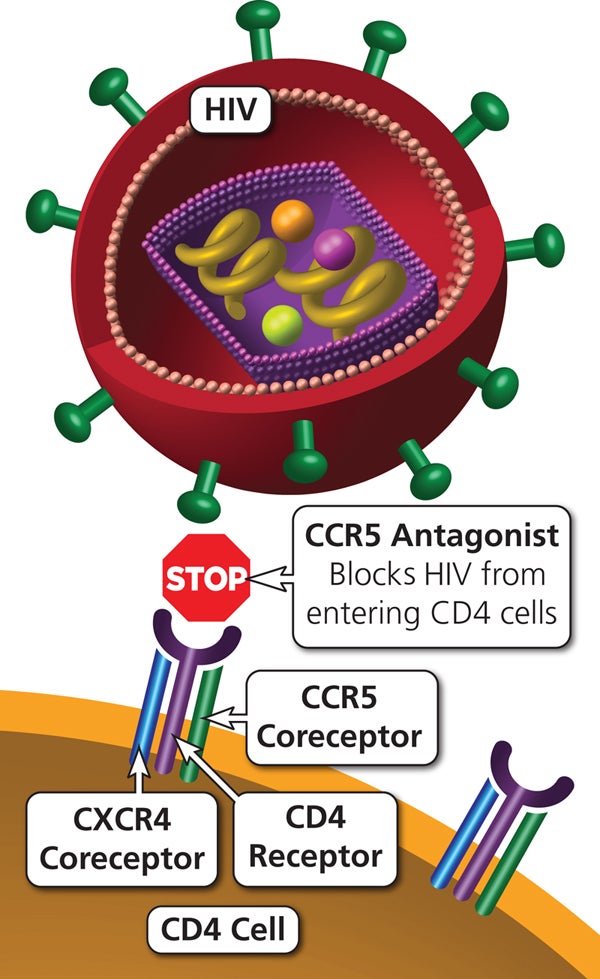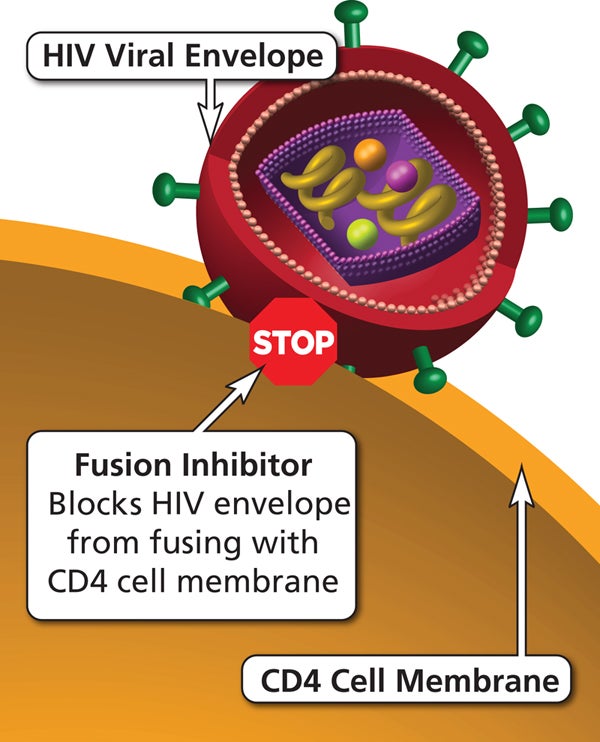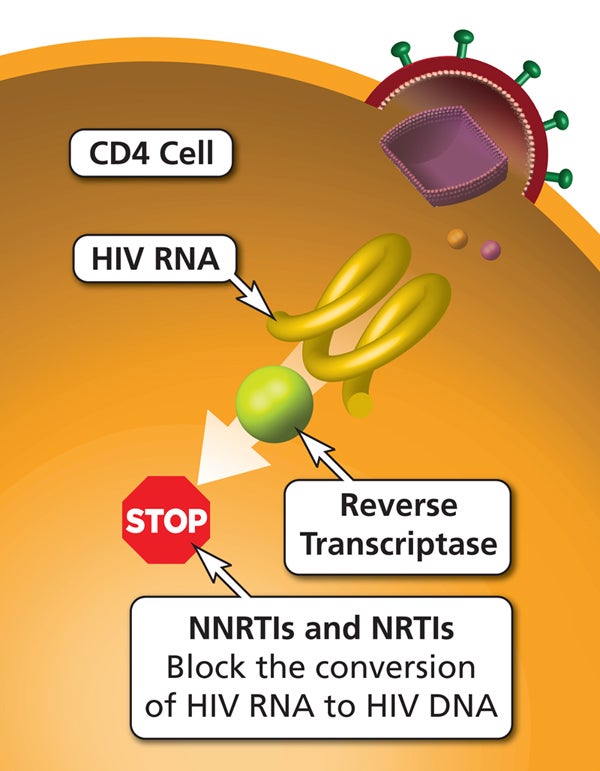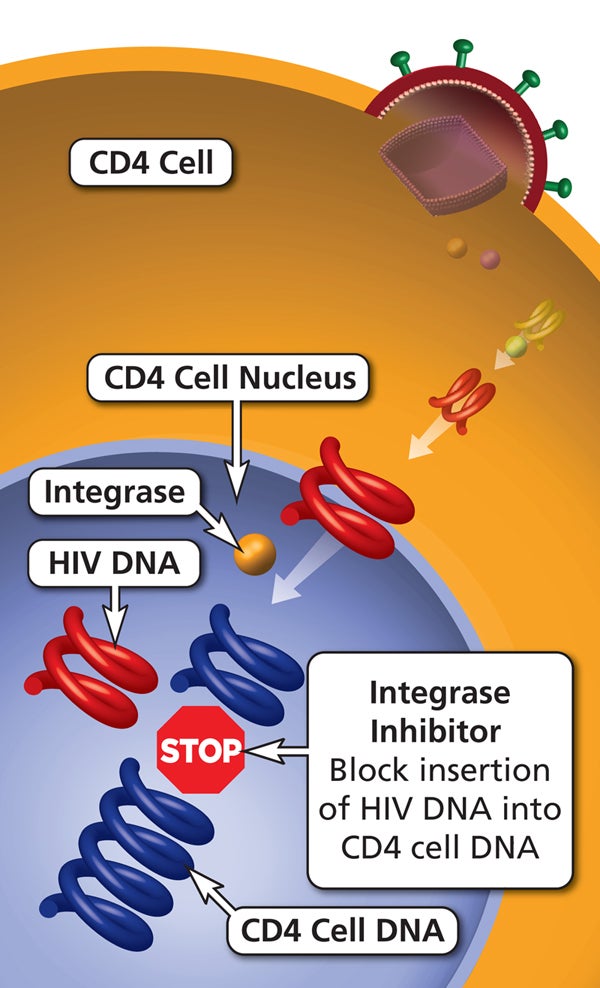Treatment for human immunodeficiency virus (HIV) consists of taking a combination of medicines daily to suppress viral activity and slow the progression of the virus.1 HIV is classified as a retrovirus, a class of virus using RNA as genetic material and replicates through integrating to the host DNA. While there is no current cure for HIV, there is a form of therapy that provides beneficial effects for individuals with HIV. This regimen is called antiretroviral therapy (ART). People with HIV should begin ART as soon as possible after being diagnosed.
Table of Contents
What is ART?
Antiretroviral therapy (ART) includes a combination of several antiretroviral (ARV) medications that target different stages of the HIV lifecycle.2 Previously, ART was called cART (combination antiretroviral therapy) to emphasize that it combines multiple drugs to facilitate lowering the amount of HIV in the body. In recent years, ART options that combine multiple drugs into a single pill have become more available. Highly active antiretroviral therapy (HAART) is another popular name for HIV therapy. Presently, “highly active” has been removed from the current ART classification because ART implies the most successful and life-improving form of therapy accessible today.
How Effective is ART?
Although current antiretroviral therapy (ART) is not able to completely cure HIV, studies and trials have shown that ART has many benefits. These benefits include suppressing HIV, restoring and preserving immune function, preventing viral drug resistance, and reducing the risk of transmitting HIV to others.3 This means many HIV-positive individuals with access to ART can still maintain a healthy and high-quality life.
Individuals living with HIV should begin ART as soon as possible after diagnosis at any stage of HIV infection, especially for people exhibiting AIDS-related symptoms. Early initiation of ART is important. Delaying ART, particularly till late disease stages risks having higher morbidity and mortality rate.3 To achieve maximum effectiveness, the patient must strictly follow ART instructions and maintain communication and visits with their health care providers.
What Are the Classes of ARV and How Does ART Work?
Antiretroviral (ARV) drugs are divided into several groups based on their interference with the HIV lifecycle. A group of drugs with similar mechanisms, structure, or approved use is called a drug class.2 There are seven drug classes for ARV including the nucleoside reverse transcriptase inhibitors (NRTIs), non-nucleoside reverse transcriptase inhibitors (NNRTIs), integrase strand transfer inhibitors (INSTIs), protease inhibitors (PIs), CCR5 antagonists, post-attachment inhibitors, and fusion inhibitors.

Entry Inhibitors
CCR5 antagonists, post-attachment inhibitors, and fusion inhibitors belong to a drug class called entry inhibitors.2 Entry inhibitors block HIV from entering the host cells.

CCR5 Antagonists and Post-attachment Inhibitors
HIV has a coat of lipid layer with proteins that bind to the receptor site of the host cell. To enter the cell body, these proteins recognize and bind to the CD4 receptor along with CCR5 coreceptor and CXCR4 coreceptor of the CD4 cells. CCR5 antagonists block the CCR5 coreceptor. Post-attachment inhibitors block both CCR5 and CXCR4 coreceptors to prevent HIV from binding and entering the cell body.2

Fusion Inhibitors
The lipid layers and proteins of HIV form the structure called a viral envelope. Fusion inhibitors prevent this viral envelope from merging with the cell membrane, thus blocking HIV from entering the cell body. 2
Nucleoside Reverse Transcriptase Inhibitors (NRTIs) and Non-Nucleoside Reverse Transcriptase Inhibitors (NNRTIs)

HIV carries RNA as genetic material. RNA facilitates HIV’s ability to convert RNA into DNA in order to infiltrate the body and generate complementary DNA within the host cell. This process is called reverse transcription. HIV uses an enzyme called reverse transcriptase for this process. Both NRTIs and NNRTIs inhibit the reverse transcriptase, thus blocking the process of reverse transcription.2
Integrase Strand Transfer Inhibitors (INSTIs)

After the reverse transcription, HIV integrates the viral DNA into the DNA of the host cell using an enzyme called integrase to replicate. INSTIs inhibit integrase, thus preventing the viral DNA integration and replication process.2
Protease Inhibitors (PIs)

If the integration process succeeds, the viral DNA will be transcripted and expressed into new HIV RNA and precursor proteins. The products will be moved out of the host cell to form and spread new HIV. For the newly formed HIV to mature and infect other cells, the precursor proteins need to be modified into the correct fragments and shape by an enzyme called protease. PIs inhibit the protease, thus preventing the possibility of new and mature HIV formation.2
How Do I Start ART?
Individuals who are infected by HIV should begin ART immediately, or as soon as possible after diagnosis. The sooner to start ART, there is more benefit from ART, and a decreased time required for virus suppression. ART regimen typically includes two NRTIs (backbone) and one NNRTIs/PIs/INSTIs (base). Before initiating ART, a baseline evaluation done by a medical health professional is required. This baseline evaluation provides crucial information for choosing the most effective ART regimen. It also helps to build a thorough medical history record, which can positively supplement treatment goals and plans.3 Baseline evaluations are comprised of several tests, including:3
- CD4 T Lymphocyte Cell Count (CD4 count)
- CD4 T lymphocyte cells, or CD4 cells, are a type of lymphocyte cells that constitute our immune system. CD4 cells are the primary host cells of HIV. A CD4 count test measures the number of CD4 T lymphocyte cells and is the most important indicator of immune function.
- HIV Resistance Testing
- Resistance testing identifies which, if any, ARV drugs that HIV has developed a resistance to. The drug resistance determined before initial treatment is called baseline resistance. These test results can guide the choice of ARV regimens.
- Plasma HIV RNA (Viral Load)
- Viral load testing measures the number of HIV RNA in the blood sample.
- HIV Antibody Testing
- Antibodies are a type of protein produced in response to alien substances such as HIV. Antibody testing measures the number of present antibodies that are responsive to HIV.
- Hepatitis A, B, and C Virus Testing
- Other Sexually Transmitted Infections (STIs) Testing
- Testing of Complete Blood Count, Fasting Blood Glucose, Blood Urea Nitrogen, and Serum Lipids
First-line ART
First-line ART is the most suitable plan for initial HIV treatment. The ARV regimens for first-line ART are usually safe, effective, and convenient for people beginning ART.2 Dolutegravir (DTG), a type of INSTIs, in combination with a nucleoside reverse-transcriptase inhibitor (NRTI) base is recommended by the World Health Organization and the U.S. Department of Health and Human Services as the preferred first-line regimen for initiating ART.4, 3 Strong evidence suggests that the two-drug regimen of dolutegravir (DTG) and lamivudine (3TC) is as effective as the traditional three-drug regimens.3 DTG is also suitable for individuals who may want to get pregnant in the future.
Second-line ART
Second-line ART is the HIV treatment plan used when initial treatment, or first-line ART, is no longer suitable for the patient. Thus, second-line ART is an extended, adapted, or new form of treatment that shifts towards the patient’s changing needs.
What is Treatment as Prevention (TasP)?
Treatment as prevention (TasP) promotes the idea that treatment can help to reduce HIV symptoms and transmission. TasP indicates that ART can progressively lower an individual’s HIV viral load so that it is undetectable with HIV RNA testing. This viral load level is called an undetectable viral load. Maintaining an undetectable viral load reduces the risk of HIV transmission through sex, pregnancy, birth, breastfeeding, and sharing needles. With an undetectable viral load, there is effectively no risk of HIV transmission through oral, anal, or vaginal sex.5
What Are the Side Effects of ART?
ARV drugs with severe side effects, such as AZT, are no longer used for ART. Side effects of currently approved ARV drugs are manageable. Common side effects of ART include:1
- Nausea and vomiting
- Diarrhea
- Difficulty sleeping
- Dry mouth
- Headache
- Rash
- Dizziness
- Fatigue
- Pain
- Weight gain
ART may have interactions with other medications. If a patient experiences negative interaction with their medication, they should consult a medical professional for proper guidance and care. Furthermore, if a patient is experiencing toxicities associated with ART, their medical health provider can modify their ART regimen to create a more functional combination.3
What are Some Difficulties of Living with an HIV Treatment?
ART is highly effective at suppressing viral load and preventing sexual HIV transmission; yet, only 51% of people with HIV in the U.S. have efficiently suppressed viral loads.3 This is partially due to undiagnosed HIV cases as well as the inability to access or maintain ART and HIV care.3 Properly continuing the daily HIV treatment plan for the rest of one’s life can be challenging. Successful HIV care requires external support, dedication to one’s health, and open communication with medical health providers. Some difficulties that individuals living with HIV on a treatment plan may encounter include:
- Taking Medication: Typically, ART medication needs to be taken consistently at a specific time, which may prove to be challenging for those who experience difficulty in remembering their medication times or maintain busy schedules. It is recommended to set a reminder and have a regular daily routine when taking ART.
- Mental Health: Struggling with mental health greatly affects one’s willingness to maintain the treatment plan. Going to a mental health professional, consistently communicating with one’s primary health provider, and finding a supportive community can positively impact the mental health of people on ART.
- Medication Side Effects: Some side effects of ART can make it hard to continue the treatment. It is recommended to communicate with one’s health provider if side effects greatly impede daily living or make treatment difficult to maintain.
Living with HIV can pose many challenges, but if an HIV-positive individual has access to the proper ART regimen and external support, the chances of increased quality of living and achieving an undetectable viral load are much higher.
Concluding Remarks
Antiretroviral therapy, or ART, uses a combination of antiretroviral drugs to treat HIV. The combination of drugs used in ART is separated by drug class, which depends on their interference with the HIV lifecycle. With ART, people living with HIV can achieve longer life expectancy and reduced risk of transmission. Patients must consistently maintain their ART regimen to receive maximum benefit. ART is highly effective at preventing sexual transmission of HIV in people with an undetectable viral load. ART may cause some unwanted or serious side effects, so constant and supportive communication with health providers is highly recommended.
References
- “HIV Treatment | Living With HIV.” Centers for Disease Control and Prevention, U.S. Department of Health and Human Services, 2019.
- “Information on HIV/AIDS Treatment, Prevention, and Research.” AIDSinfo, U.S. Department of Health and Human Services, 2020.
- “Guidelines for the Use of Antiretroviral Agents in Adults and Adolescents with HIV.” U.S. Department of Health and Human Services, 2019.
- “Update of recommendations on first- and second-line antiretroviral regimens.” World Health Organization, 2019.
- “HIV Treatment as Prevention.” Centers for Disease Control and Prevention,2020.
Last Updated: 22 May 2020.
